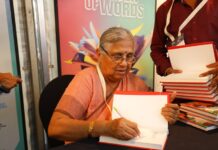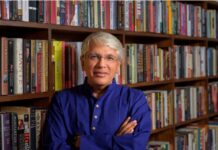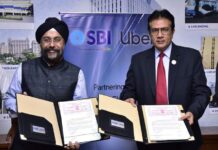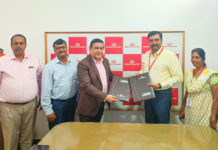New Delhi, November 06, 2018:The Prime Ministers’ Science, Technology and Innovation Advisory Council (STIAC) in its first meeting on Tuesday, in New Delhi, set some clear objectives and directions for a number of key projects. The panel will meet regularly to ensure adequate stimulus for technology innovation and entrepreneurship.
The panel was formulated by Prime Minister Narendra Modi to advice on science and technology innovation. It is currently headed by Dr. K Vijay Raghavan, Principal Scientific Adviser to the Government of India.
Other members of the council include Former ISRO chief A. S. Kiran Kumar; Professor Ajay Sood, Indian Institute of Science, Bengaluru; Professor Subhash Kak, Oklahoma State University; Professor Manjul Bharghava, noted mathematician from Princeton University; Major General Madhuri Kanitkar, the first woman dean from Pune’s Armed Forces Medical College, and industrialist Baba Kalyani. Secretaries of around 10 central ministries, including science and technology, energy and education were special invitees to the panel.
The day-long meeting included presentations on a range of topics, followed by discussions and directions for action. The formation and terms of reference for the council are a consequence of the fact that while the quality of the scientific efforts in the country are good, as a whole, the country is unable to move forward in terms of scientific and technological innovation.
To address this, the Prime Minister personally took several steps on assuming office. Post meeting a group of key scientists, a number of policy directions were pushed by the Prime-Minister’s Office’s for action by the relevant ministries.
Over the past two years, the Group of Secretaries in Science and Technology have both formulated and initiated implementation of major steps to improve technological innovation in the country. In April this year, the Prime Minister appointed a new Principal Scientific Adviser followed by the constitution of the Prime Minister’s STIAC. These concrete steps have resulted in the country’s science and technology eco-system coming together towards a cohesive direction.
“There is now a stated direction and efficiency in the system due to the increased government, industry and philanthropy investment along with quality leadership. India’s scientific enterprise can be made strong, collaborative, daring, purposeful and effective. India’s Science and Technology sector must become a shining example to the world, and will have a strong positive impact on our society and economy,” K Vijay Raghavan Principal Scientific Adviser to the Government of India said.
During Tuesday’s meeting, a number of key projects and their direction were discussed including – Accelerating Growth for New India innovation (AGNIi), Deep Ocean Mission, Teaching S&T in Indian languages, Artificial Intelligence (AI) and Quantum Computing, Bioscience Mission for Precision Health and Optimal Well-being, Waste to Energy, Research, Development and Innovation towards making India a leader in Electric Vehicles, Indian Biodiversity: characterisation, preservation and sustainable use.
All discussions and conclusions are being translated into clear action-points and will not be open-ended. The STIAC is scheduled to meet regularly and ensure that there is adequate stimulus to implement all the programs within a one-to-three year time period.
Newsvoir


































